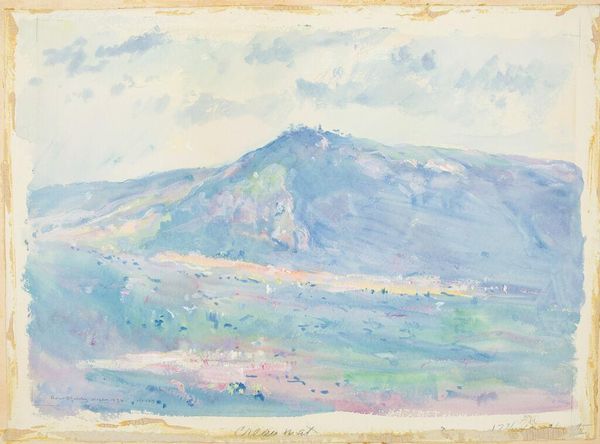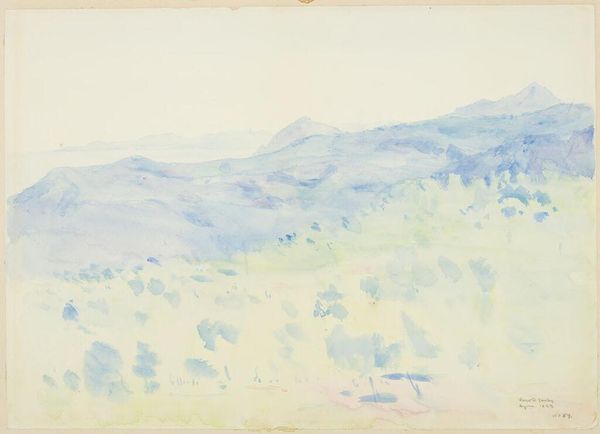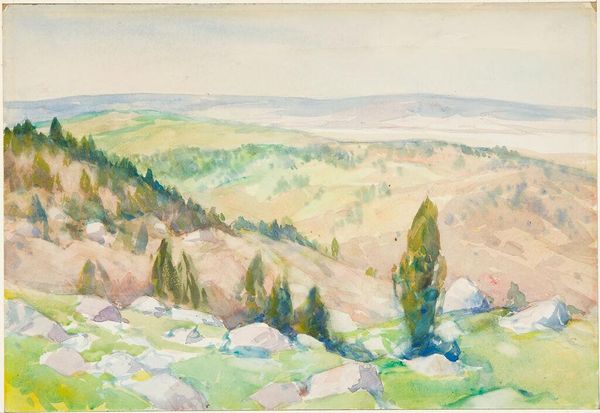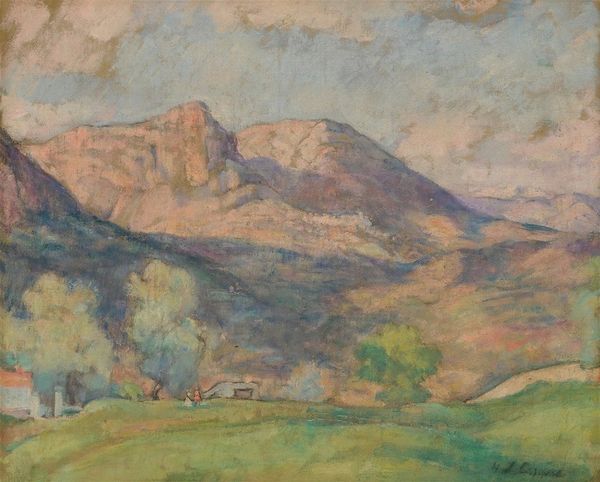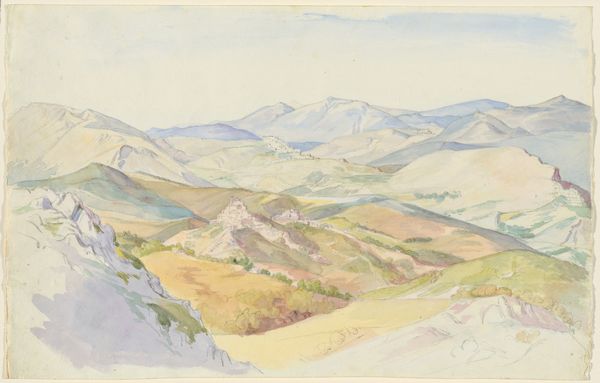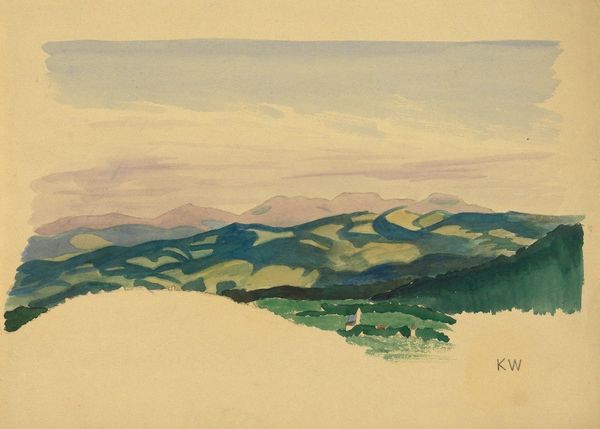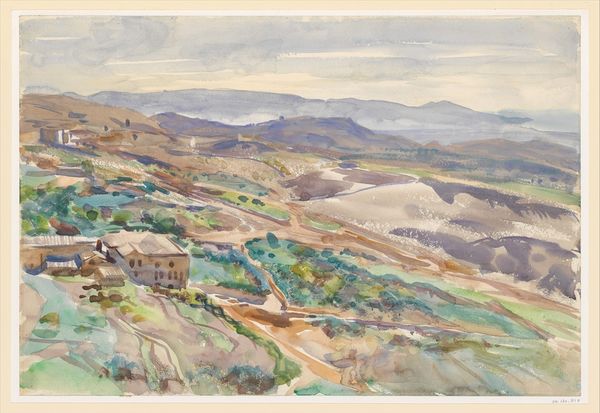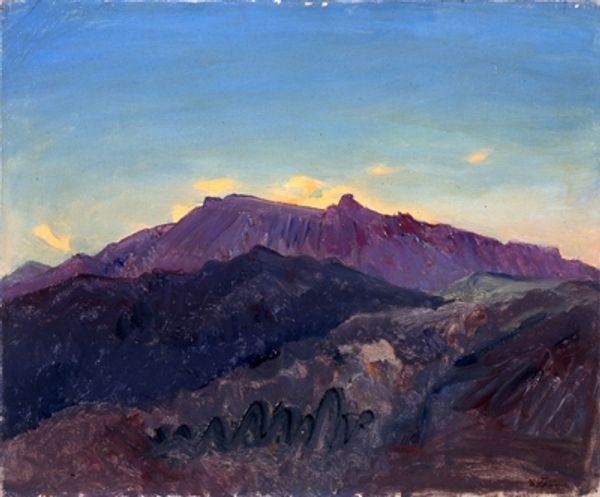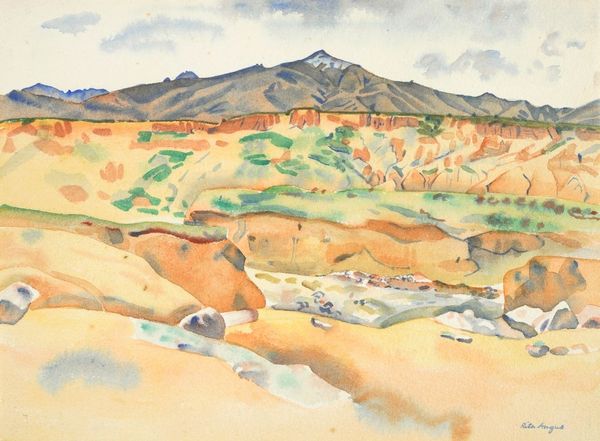
Copyright: Public domain US
Editor: Zinaida Serebriakova's "Landscape," created in 1913 with watercolor, offers a striking vista of rolling hills. I find the muted tones really captivating – almost dreamlike. What draws your eye, and how do you interpret this work? Curator: The landscape evokes a sense of cultural memory – perhaps intentionally. Notice the choice of watercolor. It softens the harshness that oil might lend, inviting a kind of nostalgic contemplation. What emotional responses do the recurring purples and ochres generate for you? Consider how the artist uses color and light to subtly convey feelings, recalling collective sentiments tied to landscapes over time. Editor: I hadn’t considered the medium as intentionally linked to memory, but that makes sense. I mostly see peacefulness, with perhaps a tinge of melancholy from the subdued colors. Curator: Precisely. Melancholy often links us to the past. Consider how Serebriakova uses the expressive qualities of the post-impressionist style – its inherent subjectivity – to tap into universal feelings associated with the land. Are there visual symbols here that feel familiar or enduring across different cultures or personal experiences? Editor: Now that you mention it, the composition with distant hills does resemble classic landscape paintings from the Hudson River School. It's like an echo, but quieter, more internal. Curator: An echo, exactly! These echoes allow viewers to access not just the beauty of the place but the shared experience of contemplating such scenes throughout history. It’s fascinating how a seemingly simple landscape becomes a vessel for layers of meaning. Editor: I definitely appreciate how she created that quiet emotion with such simplicity. Curator: And in recognizing that emotional current, you participate in the continuation of that memory. It's a lovely exchange across time.
Comments
No comments
Be the first to comment and join the conversation on the ultimate creative platform.
